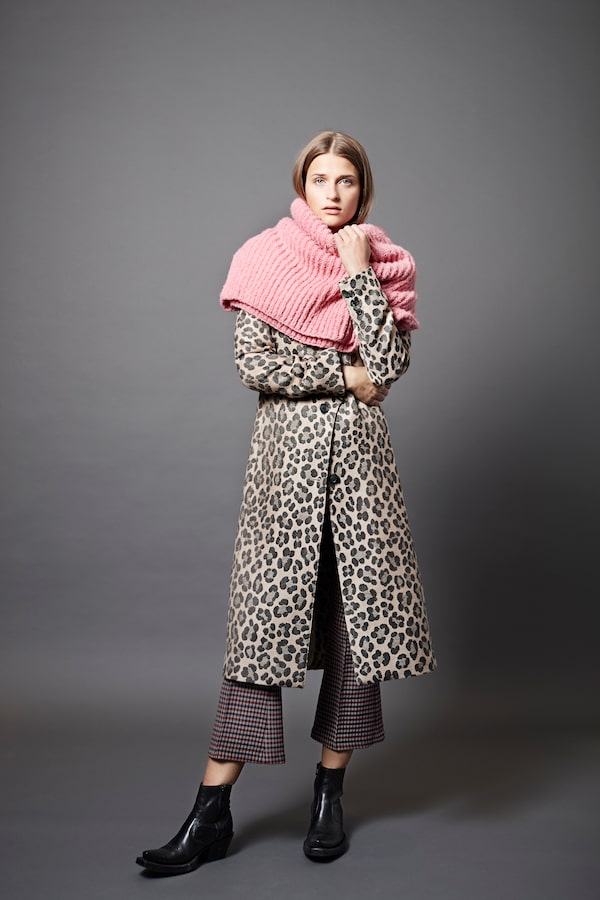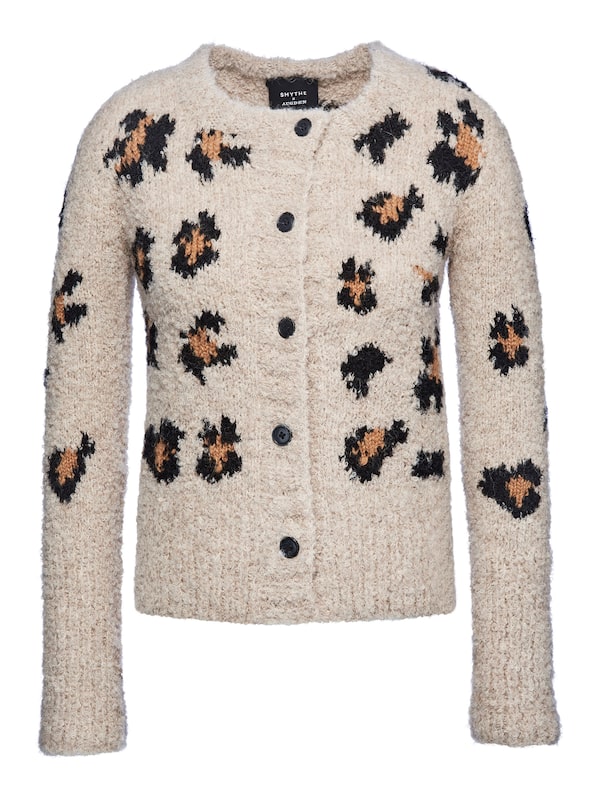
Smythe's Peaked Lapel Coat in Buff Leopard.Christopher Wahl/SMYTHE
Consider the paradox of leopards and camouflage. What evolved naturally in predator animals to help them blend in and escape notice, humans, principally women, wear to stand out. Unlike stripes, dots or plaid, leopard comes loaded with cultural meaning and associations, usually ferocity, strength and adaptability – traits associated with its source.
Over the decades, perceptions around leopard as a fashion print, especially in relation to the social status of women, have varied. But thanks to those multiple and sometimes contradictory cultural associations, I can think of no fashion textile more emblematic and symbolically apt for women right now. Put away the suffragette white suits and pink pussy hats toques and wear fine feline to protest instead. Because, as with women, leopard print contains multitudes.
In her book Fierce, Jo Weldon parses the print’s history while explaining how leopard was initially in the purview of “royalty, warriors and goddesses.” Women of power are associated with great cats, whether it be Amazonians or Queen Elizabeth II, who wore a variation of leopard when she donned spotted ermine at her 1953 coronation.

Salma Hayek wore leopard print at a TIFF party this year for A Star is Born.George Pimentel
Today, thanks to endangerment hunting protection, rather than the pelts, we are seeing the pattern as a textile print. Still, it is easy to spot in the wilds of society. At the recent Toronto International Film Festival after party for A Star is Born, for example, Salma Hayek wore the latest leopard print Saint Laurent. Beyoncé struts in a leopard leotard and thigh-high boots ensemble in her On the Run II tour. And the witty faux variations at Shrimps and House of Fluff remix chalky pastels into a kinder, gentler camouflage pattern. As Dolce & Gabbana put it, “Without animal print there could be no divas.”
Initially worn as fur hunting trophies, leopard bestowed status on the wearer, whether it was the priestess Nefertiabet painted on the limestone walls of ancient Egypt or on 18th-century portraitists. But leopard spots didn’t become a cultural phenomenon until the early 20th century. And they have sat at the fashionable intersection of sex, politics, feminism and social change ever since. The person who most embodies this, for me, is Wilma K. Russey, the first female taxi driver in New York City in 1915, who wore a distinctive leopard capelet and hat during her shifts. In the roaring Twenties, when it was the cat’s pyjamas, leopard print reflected the newly emancipated woman. By the wanton 1950s, however, it had become a déclassé pejorative tamed once again when Jackie Kennedy wore a leopard topper and by a similar patterned Givenchy wool coat and hat worn by Audrey Hepburn in Charade.
But leopard print has a spotty history in style. For every instance of it as high fashion, take Christian Dior developing his couture house’s exclusive “jungle” print with silk textile supplier Bianchini-Férier in 1947, there’s a tacky take. See the 1980s and Melanie Griffith’s working-class secretary of Long Island in Working Girl, who in an attempt to fit into the corporate world, got a makeunder and initially put away the garish animal patterns that were her wardrobe staple. Or, look at, in the 1990s, Fran Drescher’s titular character in The Nanny.

Smythe's Intarsia Granny Cardi.COURTESY OF SMYTHE
But cats have nine lives, and so do their meanings. Hilary Alexander, former long-time fashion director at the Daily Telegraph, looks at the shifting signifier in her new book, Leopard. The key is context.
Sometimes it’s worn on the verge of satire, as in the case of Catwoman (be it played by Lee Meriwether or Eartha Kitt), Shania Twain in the Man, I Feel Like a Woman video, or my favourite fictional style icon, Andrea Martin’ indelible creation Edith Prickley, the irascible manager of the SCTV station who believes that men are all lusting after her. It’s no accident she wears the feisty feline head to toe.
On pin-ups such as Bettie Page it’s vampy coquette, but worn by Anne Bancroft as the more sexually assertive character Mrs. Robinson in The Graduate, or by Cookie Lyon in Empire, it’s considered aggressive and threatening to men.
The maximalist animal print can signal any number of things, depending on the wearer, the time and the circumstance. In some ways, the aforementioned characters' sartorial choice serves as a kind of foreshadowing of the current state of affairs. The association with predatory power, where the hunter feels hunted, seems especially relevant to women today. But no matter how deeply you choose to read into what this print might say: Leopard resonates as a visual warning that the wearer is a wily, formidable adversary.